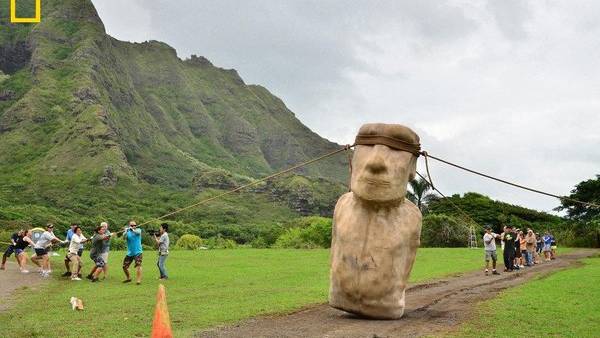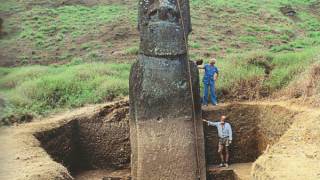How Easter Island’s statues walked
Source: cosmiclog.msnbc.msn.com
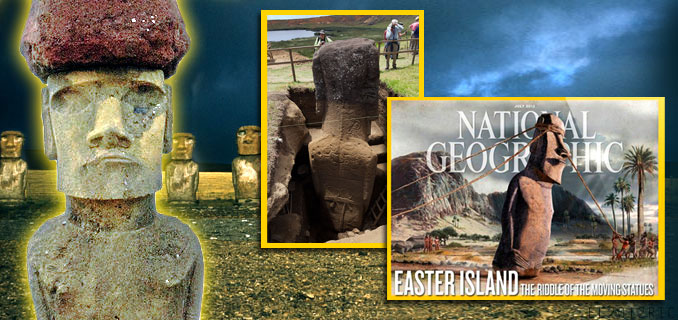
Did Easter Island’s famous statues rock, or roll? After doing a little rocking out themselves, researchers say they’re sure the natives raised the monumental figures upright, and then rocked them back and forth to "walk" them to their positions.
Their findings mesh with a scenario that casts the Polynesian island’s natives in the roles of resourceful engineers working with the little that they had on hand, rather than the victims of a self-inflicted environmental catastrophe.
"A lot of what people think they know about the island turns out to be not true," Carl Lipo, an archaeologist at California State University at Long Beach, told me today.
Lipo and University of Hawaii anthropologist Terry Hunt lay out their case in a book titled "The Statues That Walked" as well as July’s issue of National Geographic magazine. Their story serves as a counterpoint to a darker Easter Island saga, detailed in "Collapse: How Societies Choose to Fail or Succeed," a better-known book by UCLA scientist-author Jared Diamond.
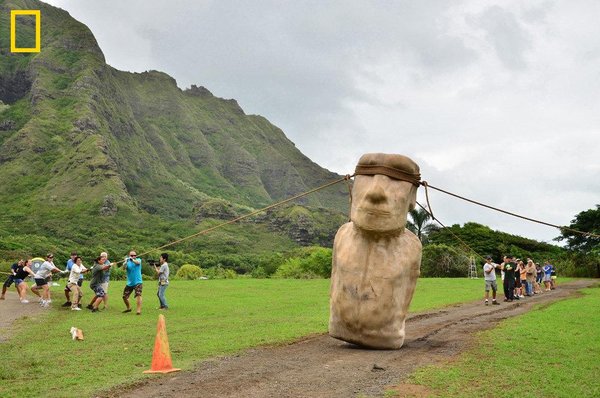
Three teams, one on each side and one in the back, maneuver an Easter Island statue replica down a road in Hawaii, hinting that prehistoric farmers who didn’t have the wheel may have transported these statues in this manner. The experiment was led by archaeologists Terry Hunt and Carl Lipo and is reported in the July issue of National Geographic magazine. Photo by Sheela Sharma
Two scenarios
In Diamond’s scenario, Easter Island’s society is portrayed as one that chose to fail through overpopulation, conflict and deforestation. Polynesians colonized the island as far back as 1,600 years ago, and cut down forests of palm trees as part of a slash-and-burn strategy that led to intensive farming, soil degradation, conflict, cannibalism and massive depopulation. By the time the Europeans arrived in the 18th century, Easter Island’s society was on the ropes.
The island’s statues, known as moai, play a significant part in this scenario. Diamond relies on the findings of other researchers who say the monoliths, weighing as much as 90 tons, were dragged into place by hundreds of islanders, using downed trees as sleds, rollers and levers. Rival chieftains recruited whole tribes to erect monuments to their glory. The broken statues found along the island’s path were a testament to the stone-carving society’s final failure.
Hunt and Lipo take a different view: The way they see it, Easter Island was never that great a place to live. "It was never verdant, and there were never very many people on the island," Lipo said.
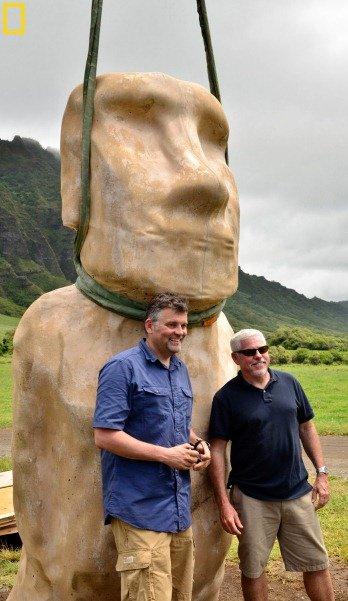 Archaeologists Carl Lipo and Terry Hunt stand in front of a full-scale replica of a stone statue from Easter Island. Photo by Sheela Sharma |
Hunt acknowledged that, "from a biodiversity standpoint, it was a catastrophe." But he said the farming methods used by the ancient islanders were designed to make the best of a bad situation. Rocks were piled up to create circular garden plots known as "manavai," and crops were planted within the circles. Nutrients would quickly leach out of the soil, but fresh rock was pulverized and added to the soil as a mulch.
"They were able to engineer their lives in a way that was really stable and sustainable," Lipo said.
The statues play a different role in the two scientists’ alternate scenario. They said it wouldn’t take all that many people to move the statues if they were raised up vertically and then rocked down the road. Taking on the task would have helped blow off steam, and might have served as a kind of social glue, Hunt said.
"You’re actually putting a lot of your effort into the process of moving a statue rather than fighting," he told me. "Moving the moai was a little bit like playing a football game."
Trial by transport
After "The Statues That Walked" came out, Diamond sharply disputed the conclusions reached by Hunt and Lipo, declaring on climate expert Mark Lynas’ blog that they were "considered transparently wrong by essentially all other archaeologists with active programs on Easter Island." Diamond addressed the debate in detail, including the idea that the statues could have been moved vertically.
"This seems an implausible recipe for disaster," Diamond wrote. "Imagine it yourself: If you were told to transport a 90-ton statue 33 feet high over a dirt road, why would you risk tipping and breaking it by transporting it vertically with all its weight concentrated on its small base, rather than avoiding the risk of tipping by laying it flat and distributing its weight over its entire length?"
[...]
Read the full article at: msnbc.msn.com
Visit msnbc.com for breaking news, world news, and news about the economy
Also tune into:
David Hatcher Childress - Easter Island Mystery
David Hatcher Childress - The Crystal Skulls
Hugh Newman - The Olmecs & Megalithic Cultures
Joseph Farrell - The Grid of the Gods Continued
Patrick Heron - The Nephilim and the Pyramid of the Apocalypse
